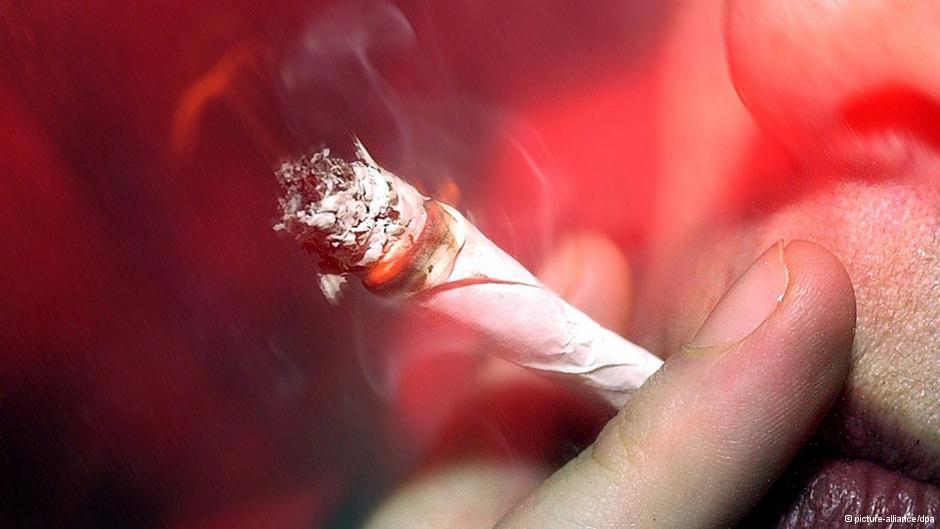Do alcohol and pot really make you more creative? It depends
Creative artists have used mind-altering substances from time immemorial. The first evidence of fermented beverages was found in a 9000-year-old archaeological site in China, alongside some of the oldest intact musical instruments.
Naturally.
In modern times, it's hard to imagine American culture without booze and pot — from Louis Armstrong, a prolific marijuana smoker, to Ernest Hemingway and F. Scott Fitzgerald, heroic drinkers both.
But how do alcohol and pot actually affect create the creative mind? Well, it depends on who you ask.
Dr. Alice Flaherty, a Harvard professor and neurologist, wrote a book called The Midnight Disease, about writers and writer’s block. Her research shows that the main thing alcohol does is inhibit brain activity — something that may not be good for creativity.
“When your alcohol level first starts to rise,” she says, “the first thing that it inhibits is some of the inhibitory systems… There have been a bunch of studies showing that alcohol doesn't actually help creativity. What it does is it lowers your judgment — so that you think what your writing is more creative. It reminds me a little of William Stafford, who said that all you have to do to get rid of writer's block is just lower your standards.”
But this isn't necessarily a bad thing. “If you’re judging your work less harshly," Flaherty adds, "you may actually feel more liberated to produce it.”
Jason White, a Nashville-based singer-songwriter and whiskey connoisseur, would agree. White works on his songs in the sober light of day, but he says the lyrics don't really start flowing until the bourbon does.
“I make a point of trying not to drink before the cocktail hour,” he says. “That’s just a line I don't like to cross. But most of my productivity occurs after the sun goes down. I’ll sit down on the porch and I'll pour myself a glass of bourbon. That's when the magic seems to happen.”
Even Stephen Sondheim, a composer and lyricist known for his cerebral and meticulous approach to his craft, admitted in a recent HBO documentary that he’d never written a lyric without alcohol. Not so much that he loses his editorial judgment, but just enough to loosen him up.
It seems, then, that for some creative artists, the disinhibiting affects of alcohol help liberate ideas and feelings from the destructive self-editor that so often lurks within. Jason White puts it this way: “I'm drinking to stop the noise in my head so I can express what I'm feeling in my heart.”
But here’s a funny thing: White's biggest success wasn't written while he was drinking. Years ago, a friend left a marijuana bud on his coffee table. White wasn’t a pot smoker, but he popped it into a corncob pipe, lit it up, and in forty minutes wrote a song called Red Ragtop. The song became a huge hit for country singer Tim McGraw.
Dr. Flaherty says scientists are only beginning to understand how marijuana works in the brain.
“One of the important aspects of creative attention is that it’s often hyper-focused in certain ways — and yet you have to be able to pay attention to relevant things that you're not expecting. Marijuana seems to help that focus.”
Scientists are studying whether pot helps with divergent thinking, the free associative, idea-generating state that’s considered an index for creativity. Flaherty says there are studies that show pot helps, and others that show that it makes it worse. The studies are inconclusive, partly because it's so hard to study creativity itself.
Artists, of course, have been conducting their own less formal experiments on pot and creativity for generations.
Fred Tomaselli is a well-respected painter who has incorporated actual drugs — including marijuana leaves — into his collage-like paintings. The sensibility of Tomaselli’s early pieces is geometric and minimalist. But in the 1980s, he began to explore the synergism between art and drugs in a more intentional way. His work became more ornate and complex. His collages burst with swirling colors and images of nature — birds, insects, the cannabis leaves themselves.
Tomaselli believes this aesthetic — the 1960s, psychedelic aesthetic of intricate patterns and groove-heavy music — is a direct result of the effects of pot on the mind. “This idea of repetitious or obsessive-compulsive mark-making — that’s the hallmark of stoners and outsider artists. There is something that marijuana has that allows that activity to come to the forefront, to make these rhythms, visual rhythms for the mind.”
So how do alcohol and marijuana compare? Alcohol might put you in a creative state for a while, silencing your inner critic, but pretty quickly your work is going to deteriorate. Marijuana can help with attention and focus, but it makes some people lose motivation.
Artists will always seek out ways to conjure and expand creative states of mind. Is there a way to achieve this without the side effects and health hazards of alcohol and drugs?
Dr. Flaherty is working with a brain stimulation treatment that doesn't involve drugs at all. There's just one small drawback. The method she uses on her patients involves the surgical implantation of electrodes into the brain.
“Most people aren't that fond of creativity that they would be willing to mess with that.” Flaherty says.
It's probably safe to say that, for now anyway, artists will stick with their bourbon and bongs.
This story is based on an interview by PRI's Studio 360 with Kurt Andersen, where you'll find other coverage of popular culture, design and the arts.
